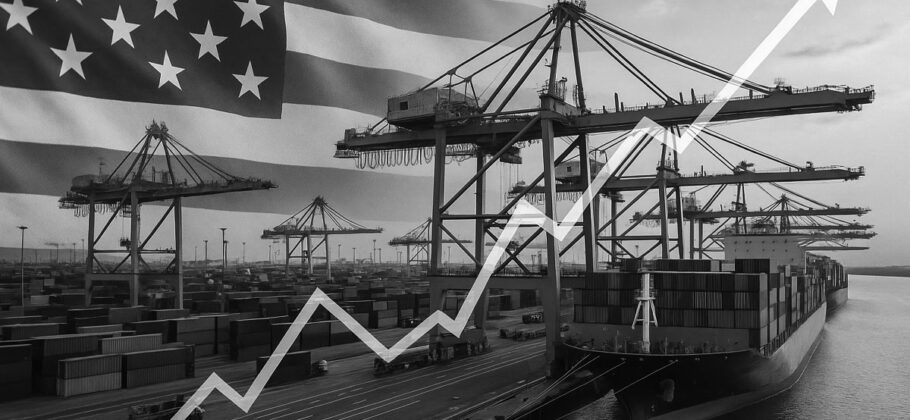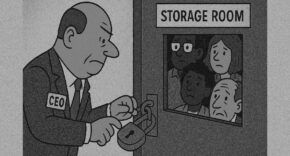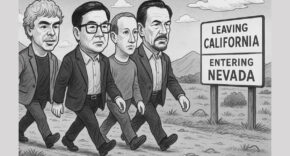When President Trump announced sweeping new tariffs in April 2025, critics predicted economic chaos. Pundits warned that prices would soar, growth would collapse, and the United States would stumble into recession. Yet seven months later, those doomsday predictions have fallen flat. The American economy is still growing, inflation is modest, and unemployment remains near historic lows.
Far from triggering economic ruin, Trump’s tariffs appear to have strengthened the nation’s hand in global trade while keeping inflation in check. The White House calls it proof that a strong, strategic America can protect its own industries without punishing its people.
Expectations of Collapse
When the tariff plan was first unveiled, many economists and commentators sounded the alarm. “This is the biggest policy mistake in 95 years,” said Wharton finance professor Jeremy Siegel, describing Trump’s actions as “an unforced error” that could cripple the economy. University of Michigan economist Justin Wolfers echoed that sentiment, comparing the move to the infamous Smoot-Hawley Act of the Great Depression.
For months, media outlets and think tanks warned that tariffs would drive prices sharply higher. Analysts at Barclays and Capital Economics predicted inflation would surge as foreign goods became more expensive. Former Obama economic adviser Jason Furman argued that tariffs on industrial inputs would “end up hurting a number of different manufacturing industries.”
But by late summer, the numbers told a different story.
Inflation Is Lower Than Predicted
The most recent data show inflation hovering near 3 percent, only slightly above the Federal Reserve’s target and far below the 8 percent levels seen in 2022. Prices for many tariffed goods have remained stable or even declined. Cars, steel, and electronics have shown little to no inflationary movement, while housing shortages, energy costs, and food supply shocks are the real sources of higher prices.
A detailed analysis by CBS News noted that “despite a barrage of new tariffs imposed by the Trump administration this year on dozens of U.S. trade partners, the prices of goods and services across the U.S. have defied many economists’ expectations and remained relatively stable.”
Even the Federal Reserve’s own data show that tariffs have not unleashed the feared wave of inflation. A report from the Dallas Fed found that the effects of tariffs “typically take many months to seep into company supply chains,” and that any impact on consumer prices has been “limited.”
White House spokesman Kush Desai summed up the administration’s view bluntly: “Despite the doom-and-gloom predictions of inflation and recession, it’s been months since Liberation Day, and inflation is trending towards an annualized rate not seen since President Trump’s first term.” He added that a Council of Economic Advisers analysis found “prices of imported goods are actually declining.”
Why Inflation Stayed Low
Economists have identified several reasons for the surprisingly mild impact of tariffs. The first is that the average tariff rate is much lower than critics claimed. Though headline figures suggested increases of 15 percent or more, the effective average tariff rate on imports in mid-2025 was about 9 percent, according to Capital Economics. Many products, including pharmaceuticals, certain electronics, and goods from North American partners, remain exempt from higher duties.
“While dutiable goods face elevated tariff rates, a substantial portion of U.S. imports remains duty-free,” Barclays analysts reported. “This is a major contributor to the low effective tariff rate.”
Second, many companies built up inventories before the tariffs took effect. Retailers such as Walmart and Home Depot stocked shelves with untariffed goods, delaying any need for price hikes. As economist Mark Cus of Barclays explained, “There was a big jump in imports of goods from Canada that would later be tariffed before the tariffs kicked in.”
Third, companies have chosen to absorb part of the costs themselves. Bank of America estimates that American consumers are paying only about half of the total tariff costs, with businesses covering the rest through slightly reduced profit margins. “We doubt that is a sustainable outcome over the longer term,” noted Capital Economics, “but for now, firms are choosing to hold prices steady.”
Retailers can afford to do this because profits remain historically high. A 2025 analysis by Pantheon Macroeconomics found that even after covering 30 percent of tariff costs, most major retailers still enjoy margins similar to the 2010s average.
The Broader Picture: Growth and Resilience
Contrary to predictions of a trade-induced slump, the economy continues to expand. Consumer spending, which drives nearly 70 percent of GDP, remains strong. The stock market is near record highs, and unemployment is low.
Kelly Kowalski, head of investment strategies at MassMutual, told the Wall Street Journal, “I’m not sure they’ve mattered as much as people thought they would.”
The Treasury Department’s revenue data tell another important story. Early forecasts predicted tariff collections could total up to $1 trillion annually, but the actual figure is closer to $400 billion. That difference reflects how companies have adjusted. Many have moved production to countries like Vietnam, Mexico, and Turkey to avoid higher Chinese tariffs. Others use bonded warehouses and free-trade zones to manage costs efficiently.
In short, the global supply chain is adapting, not collapsing. The result is a more diversified and resilient system that depends less on China and more on allied nations.
Critics Still Predict Trouble
Not all economists are convinced the economy has escaped danger. Some argue that the effects are merely delayed. “Inflation is very likely going to increase,” said Marc Giannoni, chief U.S. economist at Barclays. “It is a question of time, not so much of if.”
Stephen Stanley of Santander Bank agreed, saying that while recent months have been calm, “price increases are coming.” He expects inflation to accelerate slightly by the end of the year as older inventories run out.
Others believe consumers’ price sensitivity will prevent major increases. Thomas Simons, chief U.S. economist at Jefferies, observed that “there’s significantly higher resistance among consumers to accept higher prices” after years of post-pandemic inflation. Businesses risk losing sales if they raise prices too quickly, which may limit any future inflationary wave.
Tariffs as a Strategic Tool
Trump’s advisers argue that tariffs are not just an economic measure but a strategic one. They protect key industries from foreign dumping, encourage domestic manufacturing, and strengthen America’s negotiating position. The White House has repeatedly stated that “foreign exporters — not American consumers — will bear the brunt of added tariff costs.”
Recent producer price data supports this view. In August 2025, the Producer Price Index for machinery and vehicles showed almost no change, while wholesale inflation overall fell by 0.1 percent. These figures indicate that manufacturers are stable and competitive, not burdened by spiraling input costs.
A 2023 study by the U.S. International Trade Commission found that earlier steel and aluminum tariffs increased domestic production by nearly 2 percent with only a minimal 0.7 percent rise in prices. That experience appears to be repeating itself now.
For Trump supporters, this moment represents validation of a long-criticized strategy. Instead of crippling the economy, tariffs have encouraged resilience, revived industrial policy, and reduced dependence on hostile suppliers. Even some skeptics acknowledge that the results have been far less damaging than expected.
“The real story,” wrote CBS’s Megan Cerullo, “is that tariffs have yet to unleash the kind of severe inflationary pressures that could cause prices to spike.”
Months after Trump’s tariffs took effect, the American economy continues to perform better than nearly anyone predicted. Inflation is steady, growth is solid, and the U.S. has gained leverage in trade negotiations. The numbers reveal a simple truth: tariffs have not been the economic doomsday critics warned about.
Instead, they are proving to be a manageable, even productive, tool for rebuilding American strength. As the administration sees it, the world’s largest economy is not a victim of tariffs but a beneficiary of disciplined, America-first trade policy.
For now, the sky is clear. The long-predicted economic storm has not arrived.





